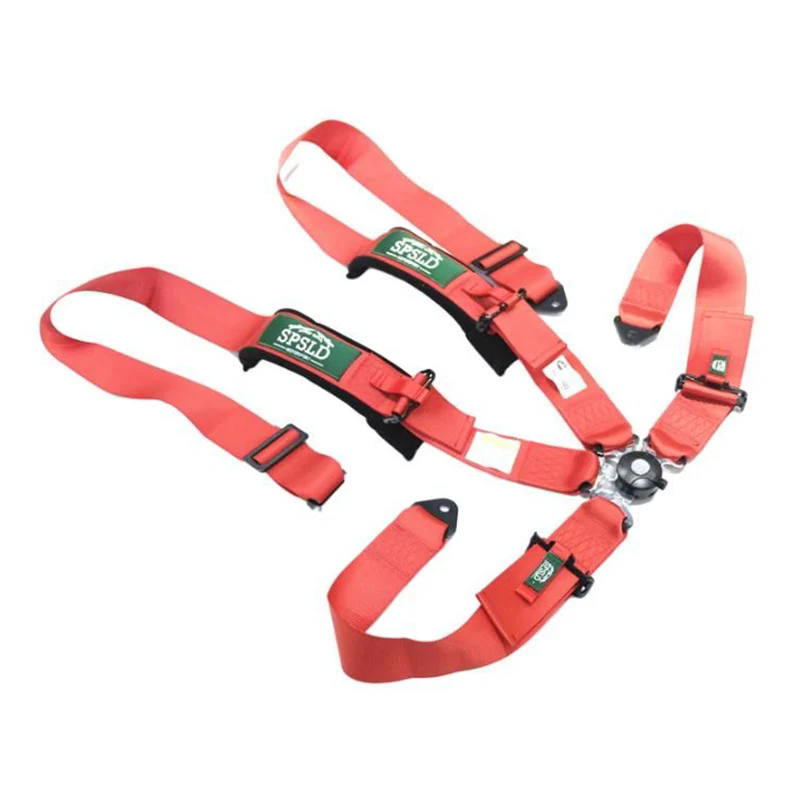Why Safety Belts Are the Most Important Car Accessory ?
2025-08-15
Safety belts are not just a legal requirement—they are a lifesaver. Statistics show that wearing a seatbelt reduces the risk of fatal injury by up to 50%. Despite this, many drivers and passengers still neglect their use. In this comprehensive guide, we’ll explore:
By the end, you’ll understand why investing in a premium safety belt is non-negotiable for vehicle safety.
The Life-Saving Importance of Safety Belts
Why Seatbelts Are Mandatory in Most Countries
Governments worldwide enforce seatbelt laws because they dramatically reduce fatalities. According to the NHTSA (National Highway Traffic Safety Administration):
-
Seatbelts saved 14,955 lives in the U.S. in 2017 alone.
-
Unbelted passengers are 30 times more likely to be ejected from a vehicle in a crash.
How Seatbelts Work in a Crash
Modern seatbelts use three key mechanisms:
-
Pretensioners – Pull the belt tight within milliseconds of a collision.
-
Load Limiters – Slightly loosen the belt to reduce chest injuries.
-
Locking Retractors – Prevent slack, keeping occupants securely in place.
The Physics Behind Seatbelt Effectiveness
Without a seatbelt, a 150 lb (68 kg) person in a 30 mph (48 km/h) crash hits the dashboard with 4,500 lbs (2,041 kg) of force.
A seatbelt spreads this force across the strongest bones (pelvis, ribs, shoulders), reducing internal injuries.
How to Choose the Best Safety Belt: Key Features
Not all seatbelts are equal. Here’s what to look for when selecting a high-quality seatbelt:
Material & Strength
| Component | Minimum Requirement | Why It Matters |
|---|---|---|
| Webbing Material | Nylon (6,000+ lbs tensile strength) | Resists tearing in high-impact crashes. |
| Buckle Strength | Must withstand 5,000+ lbs force | Prevents accidental release. |
| Retractor Type | Emergency Locking Retractor (ELR) | Locks instantly upon sudden deceleration. |
Comfort & Adjustability
FMVSS 209 (U.S. Standard) – Ensures durability and crash performance.
ECE R16 (European Standard) – Tests for extreme conditions.
GB (Chinese Standard) – Mandatory for vehicles in China.
Shoulder belt adjusters prevent neck chafing.
Lap belt tensioners keep the belt snug without discomfort.
Safety Belt Common Questions (FAQ)
Q: Can a seatbelt cause injury in a crash?
A: While seatbelts can sometimes cause bruises or minor abrasions, the force of an unrestrained crash is far more dangerous. Properly worn seatbelts distribute force across the strongest parts of the body (hips and shoulders), minimizing severe trauma.
Q: How often should seatbelts be replaced?
A: Manufacturers recommend inspection every 5 years and replacement if:
The webbing is frayed or stiff.
The retractor fails to lock.
The buckle does not click securely.
After a severe crash, belts must be replaced due to hidden stress damage.
The Evolution of Seatbelt Technology
From Lap Belts to 3-Point Harnesses
Smart Seatbelts: The Future of Vehicle Safety
1950s: Simple lap belts (still used in airplanes).
1959: Volvo engineer Nils Bohlin invented the 3-point seatbelt.
1990s: Introduction of pretensioners and load limiters.
Haptic Feedback Belts – Vibrate if the driver is unbuckled.
Inflatable Seatbelts (Ford) – Reduce impact force by 40%.
AI-Integrated Belts – Adjust tension based on crash predictions.
Global Safety Standards Compared
| Standard | Region | Key Requirements |
|---|---|---|
| FMVSS 209 | USA | Dynamic crash testing, webbing strength checks. |
| ECE R16 | Europe | Extreme temperature resistance, child seat compatibility. |
| GB 14166 | China | Mandatory for all domestic vehicles. |
Common Myths About Seatbelt Safety
Myth 1: “I Don’t Need a Seatbelt at Low Speeds”
Fact: Most fatal crashes happen at under 40 mph (64 km/h).
Myth 2: “Airbags Make Seatbelts Unnecessary”
Fact: Airbags are designed to work with seatbelts, not replace them.
Myth 3: “Seatbelts Trap You in a Fire or Underwater”
Fact: Statistically, ejection is far deadlier than being trapped.
Why Trust Chuanghecheng for Your Safety Belt Needs?
At Chuanghecheng, we engineer seatbelts that exceed FMVSS, ECE, and GB standards. Our belts undergo rigorous crash testing, ensuring reliability in real-world scenarios.
Our Product Advantages:
Military-grade nylon webbing (8,000+ lbs strength).
Reinforced steel buckles (tested at 6,000 lbs).
Compatible with all major vehicle brands.
Contact Us
For OEM partnerships or aftermarket upgrades, reach out to our experts for a free consultation. Your safety is our mission.





